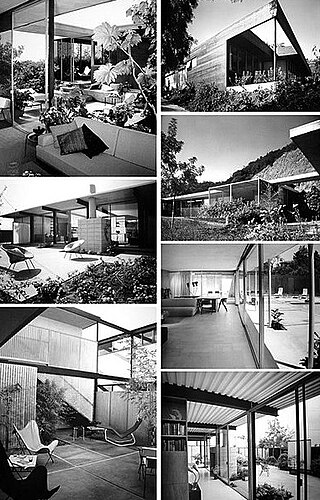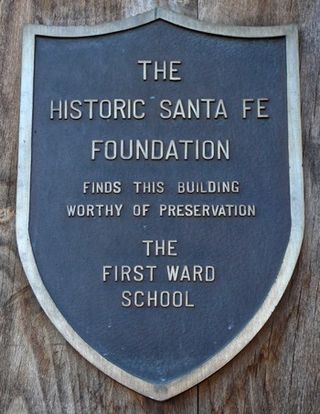Related Research Articles

An architect is a person who plans, designs and oversees the construction of buildings. To practice architecture means to provide services in connection with the design of buildings and the space within the site surrounding the buildings that have human occupancy or use as their principal purpose. Etymologically, the term architect derives from the Latin architectus, which derives from the Greek, i.e., chief builder.
Pro bono publico, usually shortened to pro bono, is a Latin phrase for professional work undertaken voluntarily and without payment.
An internship is a period of work experience offered by an organization for a limited period of time. Once confined to medical graduates, internship is used practice for a wide range of placements in businesses, non-profit organizations and government agencies. They are typically undertaken by students and graduates looking to gain relevant skills and experience in a particular field. Employers benefit from these placements because they often recruit employees from their best interns, who have known capabilities, thus saving time and money in the long run. Internships are usually arranged by third-party organizations that recruit interns on behalf of industry groups. Rules vary from country to country about when interns should be regarded as employees. The system can be open to exploitation by unscrupulous employers.
Doctor of Medicine is a medical degree, the meaning of which varies between different jurisdictions. In the United States, and some other countries, the M.D. denotes a professional degree. This generally arose because many in 18th-century medical professions trained in Scotland, which used the M.D. degree nomenclature. In England, however, Bachelor of Medicine, Bachelor of Surgery (M.B.B.S.) was used and eventually in the 19th century became the standard in Scotland too. Thus, in the United Kingdom, Ireland and other countries, the M.D. is a research doctorate, honorary doctorate or applied clinical degree restricted to those who already hold a professional degree (Bachelor's/Master's/Doctoral) in medicine. In those countries, the equivalent professional degree to the North American, and some others' usage of M.D. is still typically titled Bachelor of Medicine, Bachelor of Surgery.
A medical school is a tertiary educational institution, professional school, or forms a part of such an institution, that teaches medicine, and awards a professional degree for physicians. Such medical degrees include the Bachelor of Medicine, Bachelor of Surgery, Master of Medicine, Doctor of Medicine (MD), or Doctor of Osteopathic Medicine (DO). Many medical schools offer additional degrees, such as a Doctor of Philosophy (PhD), master's degree (MSc) or other post-secondary education.

The American Institute of Architects (AIA) is a professional organization for architects in the United States. It is headquartered in Washington, D.C. AIA offers education, government advocacy, community redevelopment, and public outreach programs, and collaborates with other stakeholders in the design and construction industries.
Building design, also called architectural design, refers to the broadly based architectural, engineering and technical applications to the design of buildings. All building projects require the services of a building designer, typically a licensed architect. Smaller, less complicated projects often do not require a licensed professional, and the design of such projects is often undertaken by building designers, draftspersons, interior designers, or contractors. Larger, more complex building projects require the services of many professionals trained in specialist disciplines, usually coordinated by an architect.
The Master of Architecture is a professional degree in architecture qualifying the graduate to move through the various stages of professional accreditation that result in receiving a license.

Residency or postgraduate training is a stage of graduate medical education. It refers to a qualified physician, veterinarian, dentist, podiatrist (DPM) or pharmacist (PharmD) who practices medicine, veterinary medicine, dentistry, podiatry, or clinical pharmacy, respectively, usually in a hospital or clinic, under the direct or indirect supervision of a senior medical clinician registered in that specialty such as an attending physician or consultant. In many jurisdictions, successful completion of such training is a requirement in order to obtain an unrestricted license to practice medicine, and in particular a license to practice a chosen specialty. In the meantime, they practice "on" the license of their supervising physician. An individual engaged in such training may be referred to as a resident, registrar or trainee depending on the jurisdiction. Residency training may be followed by fellowship or sub-specialty training.

Raphael S. Soriano, FAIA, was an architect and educator, who helped define a period of 20th-century architecture that came to be known as Mid-century modern. He pioneered the use of modular prefabricated steel and aluminum structures in residential and commercial design and construction.
An intern architect or architectural intern is a person who is working professionally in the field of architecture in preparation for registration or licensure as an architect. An intern need not have attained a professional degree in architecture to begin accruing experience hours, but said degree is a prerequisite for licensure.

Asia Pacific College (APC) is a private tertiary education institution in Makati, Metro Manila, Philippines. It was established in 1991 as a non-profit joint venture between IBM Philippines and the SM Foundation. Its program is focused on information technology in consortium with the National University.
Formerly called the Intern Development Program (IDP), the Architectural Experience Program (AXP) is a comprehensive training program created to ensure that candidates pursuing licensure in the architecture profession gain the knowledge and skills required for the independent practice of architecture. The program is developed, maintained, and administered by the National Council of Architectural Registration Boards (NCARB) and is required by most U.S. architectural registration boards to satisfy experience requirements for licensure.
A medicalintern is a physician in training who has completed medical school and has a medical degree, but does not yet have a license to practice medicine unsupervised. Medical education generally ends with a period of practical training similar to internship, but the way the overall program of academic and practical medical training is structured differs depending upon the country, as does the terminology used.

The National Council of Architectural Registration Boards (NCARB) is a nonprofit corporation comprising the legally constituted architectural registration boards of the 50 states, the District of Columbia, Guam, the Northern Mariana Islands, Puerto Rico, and the U.S. Virgin Islands as its members. Its mission is to collaborate with licensing boards to facilitate the licensure and credentialing of architects to protect the health, safety, and welfare of the public.
The Committee of Canadian Architectural Councils (CCAC) is an organization in Canada of representatives from each of the ten provincial associations of architects. The CCAC manages the development of national policies and standards for the admission to the profession of architecture in Canada. The CCAC is administered by the Royal Architectural Institute of Canada (RAIC).
Professional requirements for architects vary from place to place, but usually consist of three elements: a university degree or advanced education, a period of internship or training in an office, and examination for registration with a jurisdiction.

Outreachy (previously the Free and Open Source Software Outreach Program for Women) is a program that organizes three-month paid internships with free and open-source software projects for people who are typically underrepresented in those projects. The program is organized by the Software Freedom Conservancy and was formerly organized by the GNOME Project and the GNOME Foundation.

The Historic Santa Fe Foundation, in Santa Fe, New Mexico, is a nonprofit organization for the preservation, protection, and promotion of the historic properties and diverse cultural items considered worthy of preservation. These properties are listed on the Foundation’s Register of Resources Worthy of Preservation and many display the Historic Santa Fe Foundation bronze plaque.
D’Arcy Jones is a Canadian architect and the founding principal of D’Arcy Jones Architects (DJA), a studio practice based out of Vancouver British Columbia, Canada. DJA's portfolio consists of completed and ongoing projects focusing greatly within their local area of British Columbia while some reside as far as Ontario, Washington, California, and Switzerland. D’Arcy Jones Architects focuses mainly on small scale boutique residential homes, many of which have brought national and international recognition for the practice.
References
- ↑ Hobbs, John (1999). Canadian Handbook of Practice for Architects. Ottawa: National Practice Program for the Profession of Architecture in Canada. pp. 1.1.3 2–3.